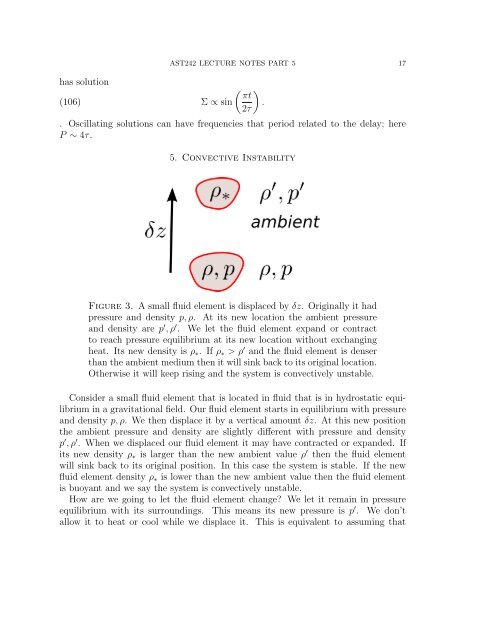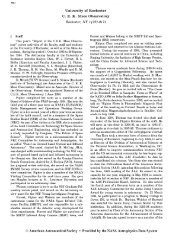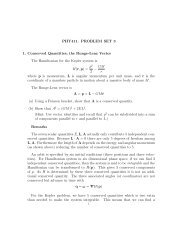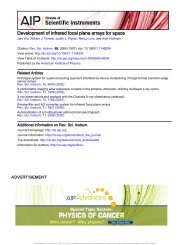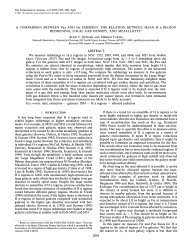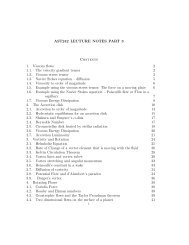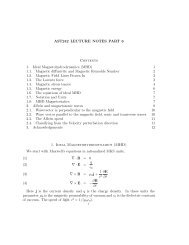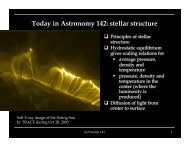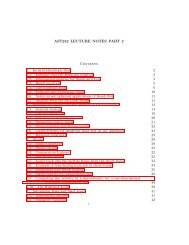AST242 LECTURE NOTES PART 5 Contents 1. Waves and ...
AST242 LECTURE NOTES PART 5 Contents 1. Waves and ...
AST242 LECTURE NOTES PART 5 Contents 1. Waves and ...
- No tags were found...
Create successful ePaper yourself
Turn your PDF publications into a flip-book with our unique Google optimized e-Paper software.
has solution(106) Σ ∝ sin<strong>AST242</strong> <strong>LECTURE</strong> <strong>NOTES</strong> <strong>PART</strong> 5 17( ) πt.2τ. Oscillating solutions can have frequencies that period related to the delay; hereP ∼ 4τ.5. Convective InstabilityFigure 3. A small fluid element is displaced by δz. Originally it hadpressure <strong>and</strong> density p, ρ. At its new location the ambient pressure<strong>and</strong> density are p ′ , ρ ′ . We let the fluid element exp<strong>and</strong> or contractto reach pressure equilibrium at its new location without exchangingheat. Its new density is ρ ∗ . If ρ ∗ > ρ ′ <strong>and</strong> the fluid element is denserthan the ambient medium then it will sink back to its original location.Otherwise it will keep rising <strong>and</strong> the system is convectively unstable.Consider a small fluid element that is located in fluid that is in hydrostatic equilibriumin a gravitational field. Our fluid element starts in equilibrium with pressure<strong>and</strong> density p, ρ. We then displace it by a vertical amount δz. At this new positionthe ambient pressure <strong>and</strong> density are slightly different with pressure <strong>and</strong> densityp ′ , ρ ′ . When we displaced our fluid element it may have contracted or exp<strong>and</strong>ed. Ifits new density ρ ∗ is larger than the new ambient value ρ ′ then the fluid elementwill sink back to its original position. In this case the system is stable. If the newfluid element density ρ ∗ is lower than the new ambient value then the fluid elementis buoyant <strong>and</strong> we say the system is convectively unstable.How are we going to let the fluid element change? We let it remain in pressureequilibrium with its surroundings. This means its new pressure is p ′ . We don’tallow it to heat or cool while we displace it. This is equivalent to assuming that


